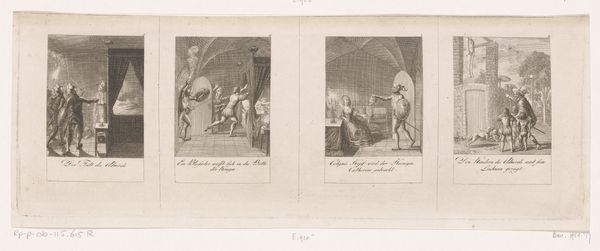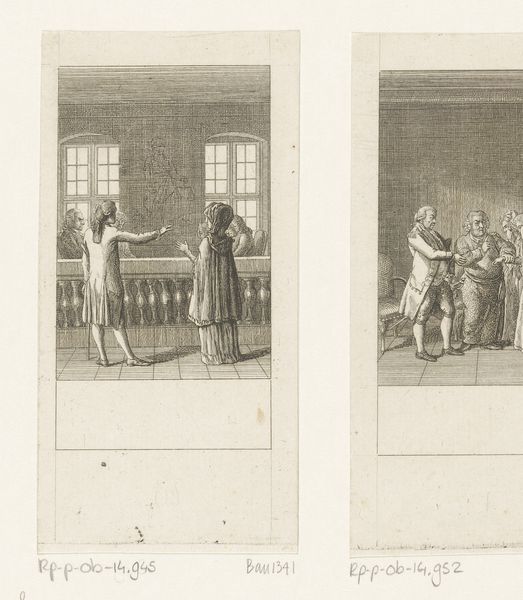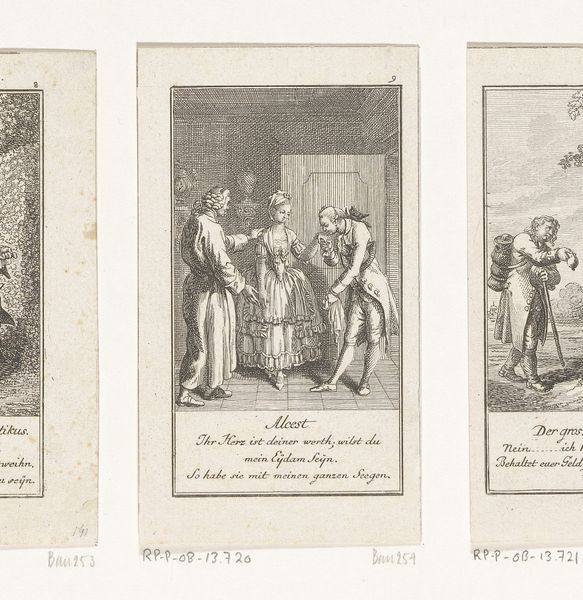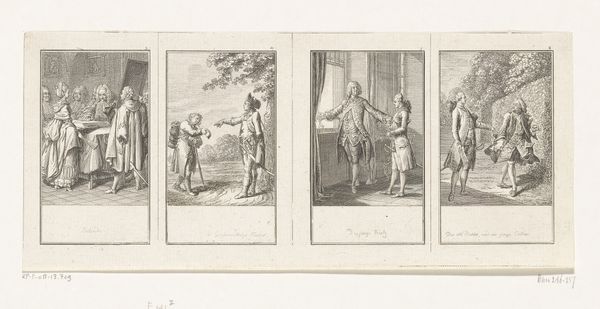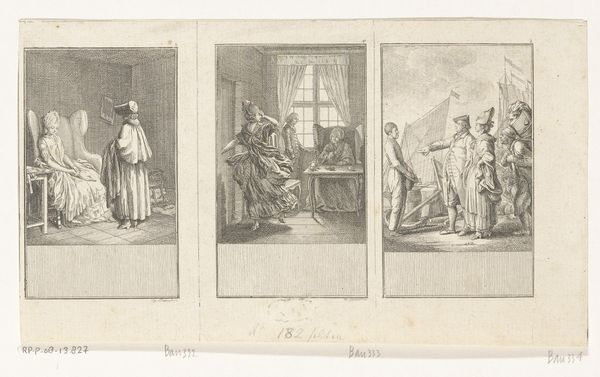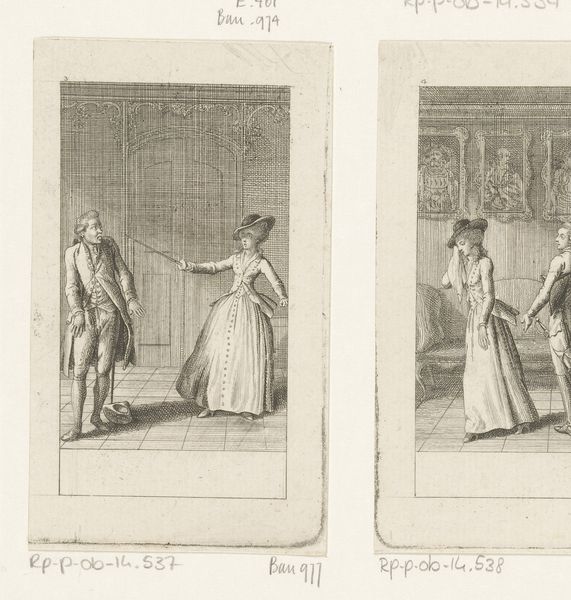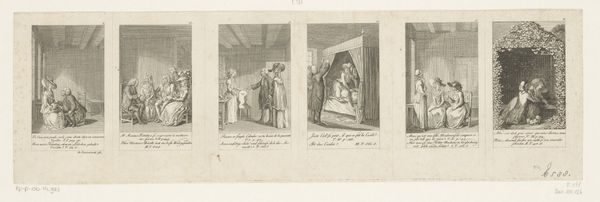
Zes voorstellingen met oorzaken en gevolgen van het huwelijk 1788
0:00
0:00
Dimensions: height 107 mm, width 377 mm
Copyright: Rijks Museum: Open Domain
Curator: Welcome. We are looking at Daniel Nikolaus Chodowiecki’s, “Six representations showing the causes and consequences of marriage”, an engraving from 1788. It resides here at the Rijksmuseum. Editor: My first thought is: "What a wonderfully depressing series!" There’s a clinical quality to the etching, it strips away any romantic notions rather quickly. Curator: Precisely! Chodowiecki presents marriage as a transaction and societal performance. He worked during the Enlightenment, when there was growing focus on social structures, and art began reflecting upon moral and social order, or rather, disorder. This print critiques bourgeois marriage customs. Editor: Absolutely. Look at the material reality depicted: each scene unfolds in stark interiors, hinting at the constrained lives of these figures. The etching, the fine lines... they speak to mass production. This isn't about individual artistry, but the broader consumption and distribution of ideas. How were prints like these affecting public discourse? Curator: They were enormously popular, shaping public opinion through satire and accessible imagery. It speaks volumes about the evolving role of art and printmaking during that revolutionary era. Prints were instruments to convey new sociopolitical ideas. Editor: It’s interesting to think about this series of images as a material artifact, not merely an artistic creation. How were the copper plates created? What were the working conditions of the printers? These images aren't born in a vacuum, they are shaped by labor and materiality. Curator: The success of artists like Chodowiecki rests upon the commercialization of art, so it reflects how an artist like Chodowiecki understood and reacted to societal needs and market forces, further blurring the lines between art and societal commentary. Editor: Agreed, there is much to unravel beyond what these individual scenes represent, such as gender inequality, class structure, and personal freedoms—it prompts a crucial questioning of marriage as labor. Curator: Ultimately, Chodowiecki provides a powerful visual essay, revealing more than just societal observations but also art's shifting public role as a tool of societal critique. Editor: Indeed, it reminds us how artistic processes—from the creation of the printing plate to the final consumption—are inherently linked to social contexts, unveiling critical insights.
Comments
No comments
Be the first to comment and join the conversation on the ultimate creative platform.

